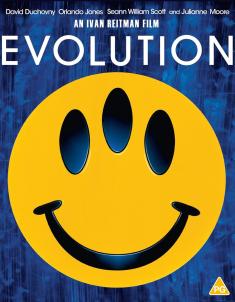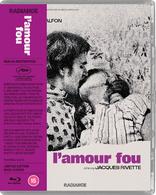Marantz VP-11S2 DLP Video Projector
Overview -This article has been abridged and updated from an original review on HDD's sister-site www.AVRev.com
IntroductionMarantz has been at the forefront of this evolution with their VP-11S1, VP-15S1 and now their VP-11S2 projectors. The VP-11S2 reviewed here is their current top of the line projector. It replaces their VP-11S1, yet is priced at $14,999, smack dab in the middle of the pricing of its predecessor and the VP-15S1. A long-throw version is also available for slightly more money.
Those looking for DLP projectors now have two outstanding choices from Marantz. The question that will face most shoppers is whether or not the VP-11S2 is worth the $5,000 premium over the already excellent VP-15S1. While that ultimate decision has to be made by you, the buyer, and will depend on what qualities you seek from your projection system, I will try to help out by outlining the differences in this article.
The VP-11S2 shares the same chassis as its predecessors. As you can see by the accompanying photographs, this chassis is extremely solid and well-engineered. Unlike many of the chasses used by other projector manufacturers, which are primarily plastic with a few thin sheets of metal, the VP series of chassis is made of lightweight alloys that provide rigidity, durability, heat sink capability and noise dampening. As with its predecessors, the VP-11S2’s build quality is excellent.
The exterior if the VP-11S2 is nearly identical to the VP-15S1 and VP-11S1 and has a lit connector panel like the VP-11S1. It would be hard to tell the projectors apart without reading the markings or turning them on. Like the VP-11S1, the new S2 features hand-picked components and is designed for maximum performance. The S2 differs from its predecessors in that it is the first DLP projector to use TI’s DC4 1080 DLP chip. The new DC4 helps the S2 achieve a claimed 15,000:1 contrast ratio, which is well above the S1’s 6,500:1 or even the VP-15S1’s 10,000:1. (Note: Marantz has just announced that the VP-11S2 will now incorporate the lens coating from the long-throw lens, which will further improve contrast ratios.) Like the VP-15S1, the VP-11S2 utilizes a three-position, dual-iris system. Light output is rated at 850 lumens of output, which is right between the VP-11S1 and the VP-15S1.
In addition to being the first projector to utilize TI’s new DC4 DLP, the VP-11S2 has another new feature: selectable color wheel speed. The seven-segment color wheel is mounted on quiet, fluid-filled bearings like its predecessors, but can run at either 4x, 5x or 6x speeds. While I am not very susceptible to color separation and rainbows, I have some friends who are and none of them report seeing any at either the 4x or 6x settings.
The remaining feature set of the VP-11S2 is very similar to that of its predecessors, and why not? The features have proved to be high-performance and reliable, a combination that is sure to be welcomed by enthusiasts.
A feature that has been on the last few Marantz projectors that is starting to get more attention from serious enthusiasts is the anamorphic lens capability of the projector. Many enthusiasts who use their projectors primarily for widescreen movies have been touting the benefits of anamorphic lenses and constant height screens. A typical set-up will include a 2.35:1 screen with side masks for 1.78:1 material. While projecting 1.78:1 material, the normal lens and processing is used. In a standard, non-anamorphic system, when a movie in 2:35:1 or even wider is played back, there are black bars above and below the screen. While the black bars in and of themselves may not be bothersome, the bars also mean that about one-third of your projector’s vertical resolution is being wasted on the bars rather utilized on the actual picture you want to watch. The solution is to install an anamorphic lens that is used when widescreen material is played. This way, the image still uses the entire vertical resolution of the DLP chip and the screen, which is where the term “constant height” comes into play. This is accomplished by using the vertical stretch mode in the projector and placing the anamorphic lens in front of the projector. The slick set-up for this is Marantz’s own. Using this set-up, the vertical stretch mode is selected, which then activates the second 12v trigger on the projector, causing the lens to slide into place. When normal 16:9 or 4:3 material is played, the lens slides back out of the way. Unfortunately, my experience with this is limited, but I liked what I saw and hope to be able to provide you with a more in-depth review in the future.
Set-upThe VP-11S2 was quite easy to set up in my new theater room. I placed it on the same stand that I had previously used for its predecessor and the VP-15S1. The stand was about 14 feet from the 92-inch, 16:9 Stewart Greyhawk RS screen. I later installed a 110-inch SMX ProLine screen with the white CineWeave HD acoustically transparent fabric. The gain of the two screens is .95 and 1.16, respectively. With the larger screen mounted on the front wall of the room, the projector’s throw distance was approximately 17 feet. As with my prior Marantz projectors, there was no discernable light spill from the lens.
As with its predecessors, the Marantz has extensive vertical shift capabilities, allowing it to be mounted approximately one-third of the screen height either above or below the screen without being forced to use digital keystone correction. The projector has an internal pattern generation that helps with positioning and focus. The pattern is white in normal installations, but will turn green when the projector is outside its optimal vertical positioning.
I again used Monster Cable’s HT UPS 500 Power Center for both a power conditioning and battery backup. With all of the recent power shortages and outages its worth mentioning again: with digital projectors, I would recommend installing a battery backup unit as well, so that the cooling fans can run if you have a power failure. Video connections were made through a Halcro SSP-220 audio video processor and, later, on Marantz’s AVP-8003 (review coming soon). I turned off all video processing in the Halcro and AVP-8003. Sources included a Marantz DV-9600 DVD player, Pioneer Elite BDP-95FD Blu-ray player and a DirecTV HD DVR.
The DV-9600 was set to output 480i via HDMI and component and the BDP-95FD was set to 1080p/ 24 fps via HDMI. I began my review with a combination of Kimber Cables and Tributaries new Series 9 HDMI cables. Later, I used Kimber Cables HDMI and component video cables exclusively to minimize any variables. Even though I have found the HDMI connection system to be finicky, I had no glitches or problems with either the Kimber Cables or Tributaries HDMI connections and can recommend them without reservation.
Using both the Digital Video Essentials and the Monster Cable / ISF calibration discs to calibrate the projector (I know, I need to get the Blu-ray version of DVE), I kept most settings close to standard with the iris in the “1” position and gamma at “Standard.” With some sources, I set the color to minus one or two to reduce the saturation level.
The VP-11S2, like its predecessors, has a plethora of picture profiles to choose from. Each profile has five gamma presets and Theater and Dynamic modes for eight configurations. Further, there are many fine adjustment menus, including color temperature, aspect ratio, black level adjustment, gamma and more. The professional calibrator and adventurous hobbyist will have many adjustment options available to obtain the best picture quality for any situation.
Watching the VP-11S2Beginning with standard-definition discs, I have to say that the video scaling was generally very clean and absent of artifacts. When alternating from DVD and Blu-ray versions of the same material, the primary difference was that the DVDs were slightly softer. I also noticed that the color saturation levels seemed to be just a bit less with the DVDs.
I watched a DVD I used with the VP-15S1 review, The Incredibles (Walt Disney Home Entertainment). As with the VP-15S1, the VP-11S2 exhibited excellent field uniformity. This animated feature, like many others, provides large fields of uniform color. Better-quality projectors, such as this one, will reproduce these fields with great uniformity. Recently, some friends came over to watch some high-octane, blow ‘em up films, so we played Heat (Warner Home Video) and The Rock (Buena Vista Home Entertainment). The scene where Robert De Niro is standing in the shadows is an excellent test of low-level detail and one that challenges most DLP projectors. The VP-11S2 was able to render more detail with less noise than I have seen on any other DLP projector. True, a good D-ILA projector can do slightly better in this regard, but there are other tradeoffs to consider. The Marantz also did a superb job with The Rock’s multitude of darker scenes and was excellent at portraying skin colors, as well as outdoor scenes. Items of nature looked natural; the trees were a realistic shade of green rather than some glow in the dark neon. Color accuracy is a place where good DLP projectors, such as the Marantz, can differentiate themselves in a good way from D-ILA.
Moving on to high-definition, specifically Blu-ray, shortly before I did the VP-15S1 review I acquired Casino Royale (Sony Pictures Home Entertainment), the newest installment in the James Bond film series. This has become one of my favorite demonstration discs, as it is well done and many people are familiar with it. The nighttime opening scene is in black and white and features the local MI-6 chief getting out of his car in front of a modern-looking office building. As with the two prior projectors, the grays did not shift. This is a good sign, as many projectors demonstrate some color push in what should be a black and white image. The dark scenes had noticeably less noise than the VP-15S1 and even improved upon the already excellent performance of the VP-11S1. The now-famous parkour foot chase scene that follows allowed the projector to show off. The colors, while still slightly oversaturated, were much more accurate and realistic than with the VP-15S1 and perhaps slightly better than with the VP-11S1. The contrast levels and sense of depth were noticeably better. The scene includes dark indoor portions and brightly lit outdoor portions. Both were handled with aplomb.
Dan In Real Life (Blu-ray, Buena Vista Home Entertainment) features several scenes along the New England coast. Having visited the area, I immediately recognized the projector’s color accuracy. The detail on the darker interior scenes was very good while maintaining good color accuracy.
While watching DirecTV, I let the Gennum 9351 processor in the projector handle all of the scaling. It was not football season, so I watched some high-definition baseball games. The uniform colors were vivid, while the grass was a natural shade of green. The processor did a great job, with no visible jagged edges on any of the straight lines, even during fast pans. Watching 1080i programs, I never had any problems with the Gennum processor’s de-interlacing capabilities. All was smoothly reproduced without visible twitter.
The DownsideIt is hard to criticize this projector. The two items I noted in my review of the VP-15S1, mechanical noise and video noise in the darker scenes, have been well-addressed. The color wheel speed lets the user slow down the wheel and reduce the noise. The low-light detail has also been improved with the dramatic increase in contrast.
In an ideal world, the mechanical noise could be decreased even more with an option to dim the status LED (noticeable only in a completely dark room). With respect to the mechanical noise, I should note that I only noticed it when the projector was stand-mounted two to three feet from my head. When I switched to the 110-inch SMX screen, I had the guys from Evolution Audio Video come to my house and mount the VP-11S2 on the ceiling. When the projector was moved to the ceiling, about four feet behind my viewing position, the noise all but disappeared. Of course, as DLP technology improves, I would like to see even better contrast ratios approaching those available with D-ILA, but without sacrificing DLP’s color accuracy advantages.
ConclusionThe VP-11S2 is quite simply one of the best projectors available on the market. The Marantz has excellent color fidelity, uniformity and processing. One needs to realize that a projector is a compilation of parts, all of which are important. Some projectors many have higher contrast, more lumens, etc., but the Marantz takes an excellent light engine and matches it with an equally capable processor and lens system. The combination of these components makes for a system that is hard to beat for those seeking high-fidelity video.
The Marantz VP-11S2 takes DLP performance to the next level. I recognize that video aficionados are split into D-ILA and DLP camps, just as many audiophiles are split between tubes and solid state. D-ILA has long held a lead in absolute contrast over DLP. The newest Marantz minimizes that difference by providing excellent contrast. Only on the lowest light-level scenes will the D-ILA prevail. The limitations of the current DLP systems have a slight film in these scenes, whereas D-ILA does not. Both systems have tradeoffs. Thankfully, there are manufacturers who strive to better their products and both types of systems are improving by leaps and bounds. Excellent video quality can be achieved with either system.
Considering all of the above, I choose DLP, specifically the Marantz VP-11S2, as my personal reference projector. I have put my money where my mouth, selling my old projector and buying the review sample. As a reviewer, I have had the opportunity to view many systems, prototype and production, in show conditions and in fully-controlled rooms. Having viewed a large number of systems, I believe the Marantz VP-11S2 to be an excellent choice for a system seeking absolute video fidelity. Less expensive than its predecessor, it is very competitively priced. Kudos to the guys (and gals) at Marantz on hitting a home run with the VP-11S2.












